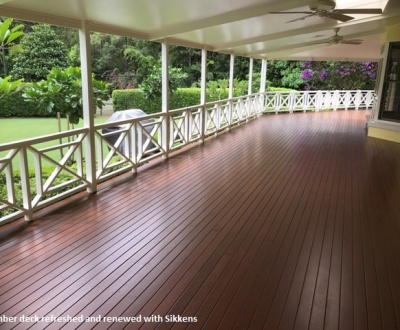Whether you’re installing a new staircase or refurbishing an old one, it’s important to ensure it complies with regulations for stairs in Australia. These regulations cover a range of specifications which have important implications for how timber flooring is laid on the stairs. Below we outline the main regulations for stairs in Australia to help you understand the key requirements.
What are the building regulations for stairs?
The National Construction Code (NCC) outlines requirements for internal residential stairs to ensure people are able to move between different levels of the building safely. There are three main types of requirements flooring contractors should be aware of as they influence the type of flooring that can be laid:
- Dimension requirements;
- Slip resistance requirements for the flooring surface; and
- General requirements, for the overall construction of the stairs.
What dimension regulations for stairs in Australia mean for flooring
In Australia, internal stairs must meet certain dimension requirements. The most important of these requirements relate to the stair ‘riser’ and ‘going’ dimensions. As illustrated in Figure 1, the ‘riser’ is the height between consecutive stair treads, which are the part of the stair people step on. The ‘going’ is the dimension from the front of the tread to the front of the next tread.
Figure 1 | Parts of the staircase
Under regulations, the riser height and going width must fall within the dimension requirements outlined in Table 1, such that twice the riser height added to the going, must fall within specific limits. Effectively, this means that riser height can vary by a maximum of 10mm throughout a flight, or 5mm between adjacent risers.
Table 1 | NCC Table 3.9.1.1 Riser and going dimensions (mm)
Stair type | Riser (R) Max | Riser (R) Min | Going (G) Max | Going (G) Min | Slope Relationship (2R+ G) Max | Slope Relationship (2R+ G) Min |
Not spiral | 190 | 115 | 355 | 240 | 700 | 550 |
Spiral | 220 | 140 | 370 | 210 | 680 | 590 |
Because the finished stairs—including the flooring—must meet these dimension requirements, it is vital that the staircase is designed to leave enough space for the type of flooring chosen by the homeowner.
Likewise, if the flooring is being replaced (say carpet is being replaced with timber), it is important the new floor still fits within the compliant dimensions.
What slip resistant regulations for stairs in Australia mean for flooring
In 2014, the NCC introduced slip resistance requirements for stairs in residential buildings, similar to those already in place in commercial buildings. These specify that when tested in accordance with AS4586, stair treads must have a slip-resistant finish or a slip-resistant nosing strip that at a minimum meets the requirements set out in Table 2.
Table 2 | NCC Table 3.9.1.3 Slip-resistance classification
Application | Dry surface conditions | Wet surface conditions |
Ramp not steeper than 1:8 | P4 or R10 | P5 or R12 |
Tread Surface | P3 or R10 | P4 or R11 |
Nosing or landing edge strip | P3 | P4 |
The ‘P’ classifications are determined through an onsite wet pendulum test, while the ‘R’ classifications are determined through the oil-wet ramp slip-resistance test. You can find more information about these tests, and slip-resistance measures in our Guide to Slip Resistance for Timber Floors.
These requirements influence the types of timber floor finishes that are appropriate for stairs. Specifically, Information Sheet #59 from the Australasian Timber Flooring Association states:
- Solvent-based or alternative hard coatings on the market do not comply with R10 but there are additives to provide the necessary slip resistance.
- Some lower sheen water-based coatings do comply with R10, as do some oil-based finishes.
- P3 and P4 nosings can detract significantly from a staircase’s aesthetics. Transparent or translucent tapes of varying widths are available and will have the least visual effect, however, these also need to be certified.
- The flooring contractor should provide the client with proof the product or strip is certified.
- Slip resistance certificates from other countries are not likely to be accepted. Products should have certificates from testing in Australia or NZ.
General regulations for stairs in Australia
Flooring contractors should also be familiar with general regulations for stairs in Australia including:
- Stairs must not have more than 18 steps in a flight;
- Stair goings must be consistent;
- The stair slope must fall within certain bounds; and
- A balustrade must be installed if a person can potentially fall more than a metre.
References
- Australasian Timber Flooring Association, 2019, Guide to Internal Stair Requirements
Brisbanes Finest Floors, with over 20 years of experience in adding wow to any wooden floor, internal or decking.
Request a free quote
Talk to us today and discuss your floor restoration, repairing your deck and new flooring.
Recent Posts
- What Are the Different Types Of Timber Floor Finishes? An Expert Guide September 10, 2024
- Spotted gum deck, sanded and coated with Intergrain Ultradeck August 27, 2024
- Understanding Timber Flooring: Colour Changes and Stains August 21, 2024









